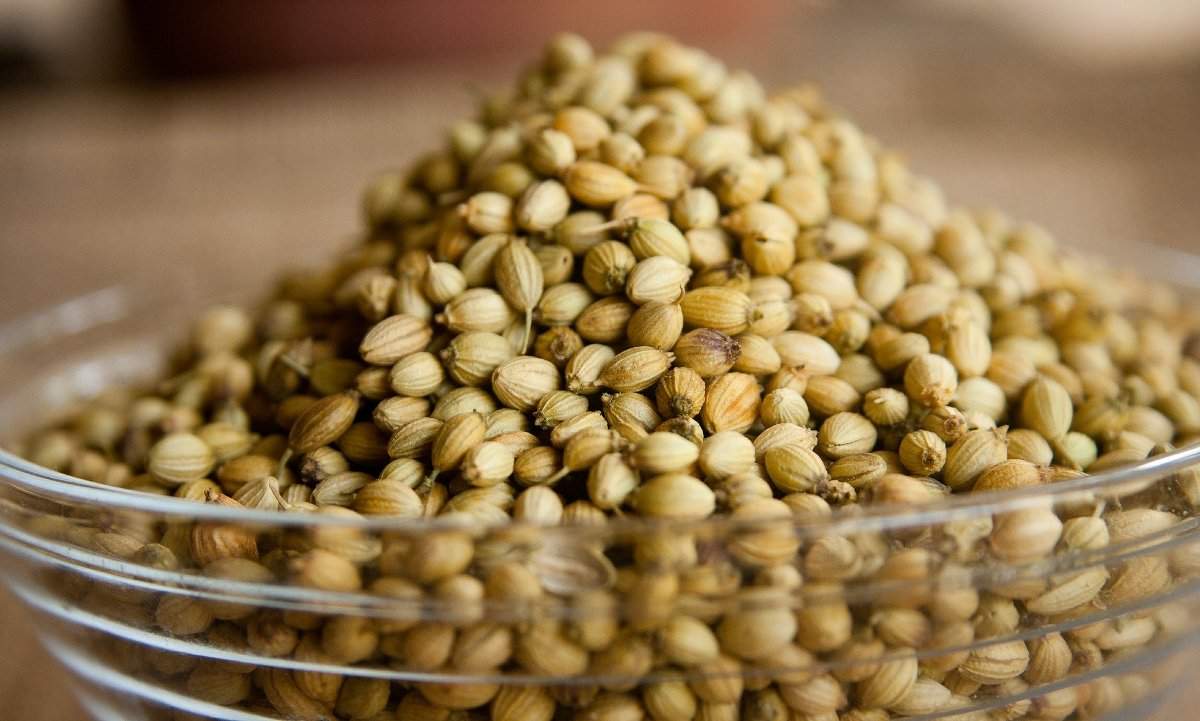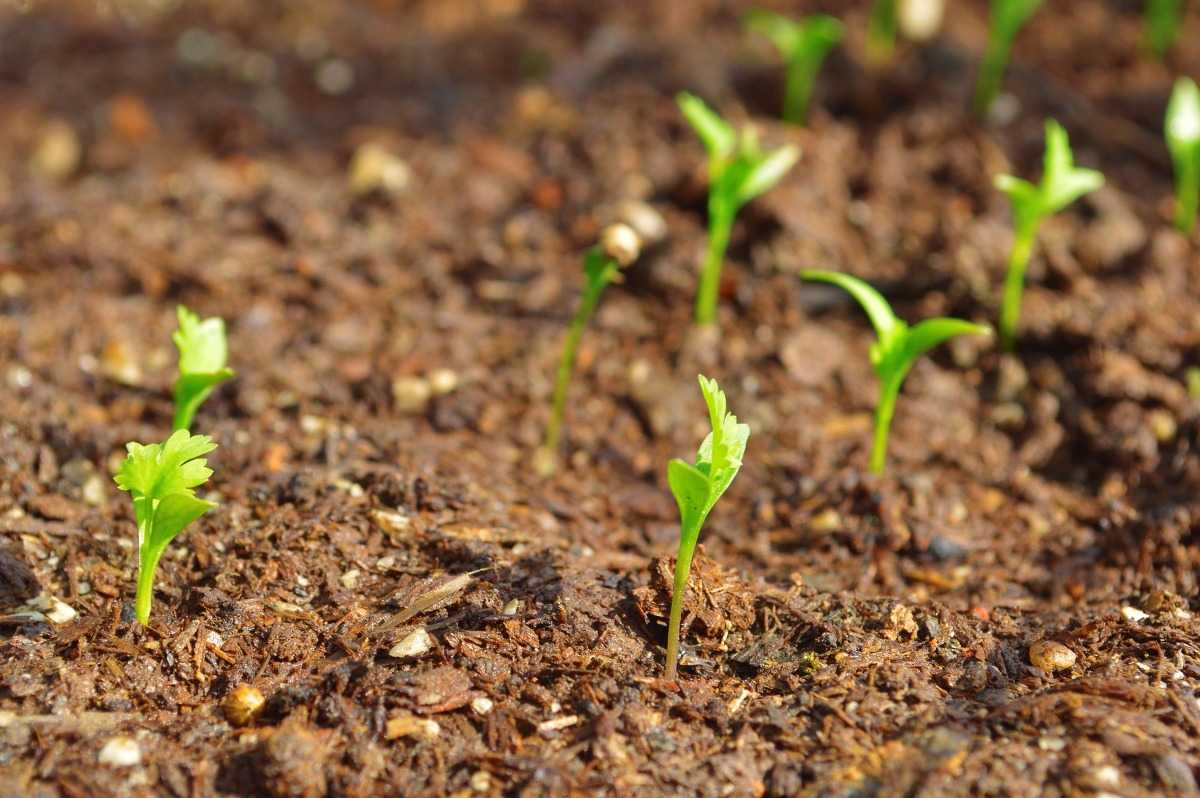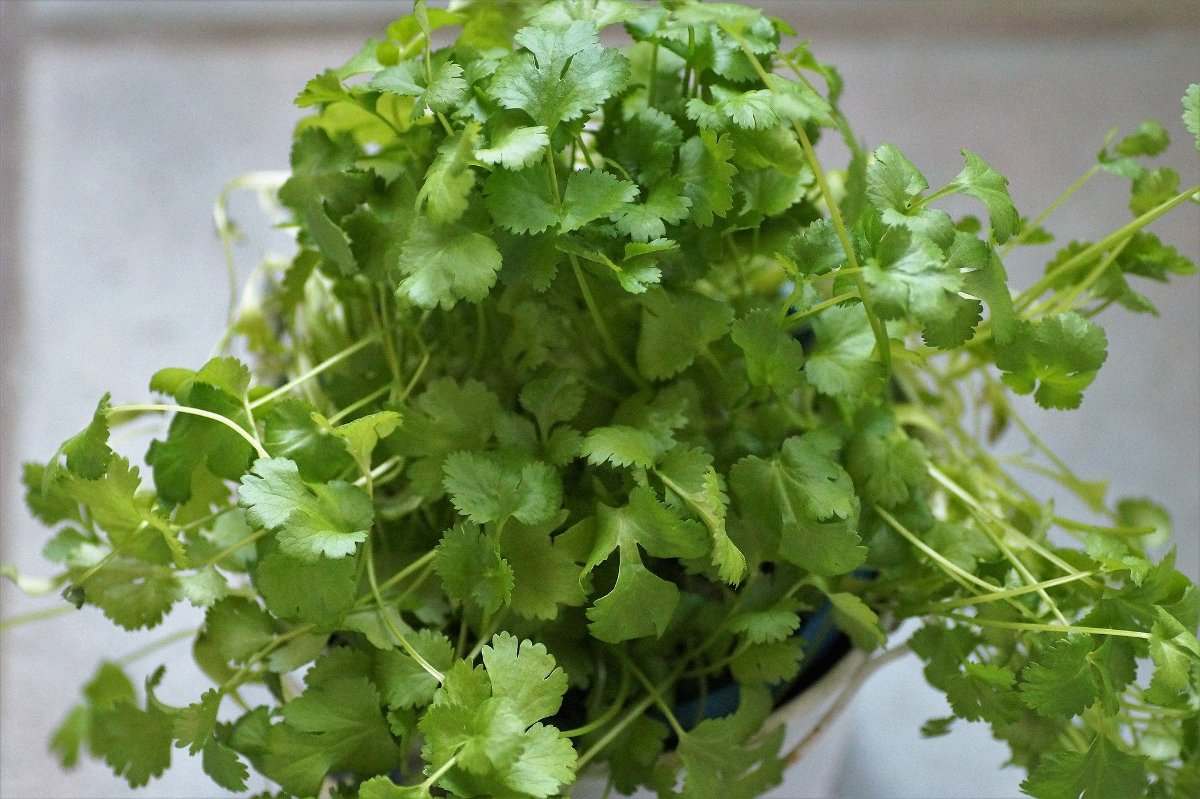Introduction to coriander seed germination procedure
Coriander can be grown for its leaves or its seeds. A seed variety will produce seed quicker than a leaf type variety but once a plant ‘runs to seed’ it will stop leaf production. If you want coriander leaves for cooking this means you will have a shorter picking time.
Coriander plant enjoys a sunny position but appreciates a little shade during the hottest part of the day. Plants will run to seed more quickly if stressed by hot weather so this is very important for leaf varieties. In this article we also discussed below topics;
- Process of Growing Coriander from seed
- Time to take Coriander seeds take to germinate
- How do you germinate Coriander seeds
- Coriander seed germination temperature
- Should I soak coriander seeds before planting
- Process for germinating Coriander seeds
- Coriander seeds germination period
- Paper towel germination method for growing Coriander
A step by step guide to coriander seed germination procedure
Difference between cilantro and coriander
Cilantro and coriander both are different parts of the same plant.
Cilantro refers to the leaves of the plant, which are used as an herb. And this describes the vegetative stage of the plant’s life cycle.
Coriander refers to the seeds, which are usually ground and used as a spice. This will happens after the plant flowers and develops seeds.
Coriander seeds
The “seeds” are two cilantro seeds encased in a husk. The husk is hard, round and light brown or grey. Before you plant them in the ground, you want to prepare the cilantro seeds to increase the chances that they will germinate. Gently crush the seed husk holding the 2 seeds together. Soak the cilantro seeds in water for about 24 to 48 hours. Remove from the water and allow drying.
You should not miss the Organic Container Gardening Ideas for Beginners.

Coriander seed is a fruit containing two seeds in it. Thus, the round thing that you see has two seeds in it. Each of them will grow into a plant. The Coriander fruit can be sown whole or split and sown. When split, it increases the seed germination rate since it scarifies the seed.
Choosing coriander seeds
Cilantro is related to the carrot. Select a variety of seed that best suits your needs. The “Santos” variety produces a large yield of cilantro leaves, but it flowers and goes to seed quickly than the “Jantar” variety. Although the Jantar plants are longer-lasting, they produce half the yield in leaves of Santos plants.
The spacing of coriander seeds or coriander plants
Sow the seeds about 1⁄4 inch deep, spaced 6 to 8 inches apart, in rows about 1 foot (0.3 m) apart. Cilantro seeds require plenty of moisture to germinate, so make sure to water them frequently.

Plant seeds about ½ inch deep and spaced 2 inches apart if you are planning to use the plant for its leaves. For coriander seed, space the seeds 8 to 10 inches apart. Rows must be at least 15 inches apart. Successive plantings can be done until late summer if a continued harvest is desired.
Seed germination time and temperature for coriander
The germination of coriander takes up to 2 to 3 weeks. Remember to thin young plants to about 20 cm apart to allow them to grow to their full size. Cilantro seed germinates when the soil temperature is 12 to 20°C. Thin plants to 8 inches apart with rows 18 to 24 inches apart.
Trouble germinating coriander seeds
Coriander seeds are generally the easiest to germinate. Just sprinkle them on the ground and then you will see seedlings in a week. Coriander seeds don’t germinate due to the below reasons;
- Poor seed quality.
- Sowing seeds that are not meant for sowing. (Coriander seeds are also used for cooking)
- Aged seeds
Conditions for growing coriander
Coriander plant, like most herbs, is fairly undemanding. Plant it in a sunny location in light, well-draining soil and it doesn’t grow well in heavy clay soils. Water young coriander seedlings frequently to keep the soil evenly moist. As the plants become established, they produce best with slightly dry conditions. Coriander doesn’t require a lot of fertilizer; in fact, too much fertilizer can dilute the flavor of the leaves and seeds. Dig about 1/4 cup 21-0-0 fertilizer per 25 square feet of garden space into the soil to a depth of 6 inches.
Keep the soil moist and expect to see seed germination 7 days after the seeds were planted. After 7 days or less, under the soil, the cilantro must have a white sprout coming out of the seed. You can check by gently uncovering the soil with fingers and exposing the seed. After another 2 to 3 days, you should see a green sprout pushing through the soil. If you uncovered the sprout than a green sprout must be visibly coming out of the seed.
Tips for germinating coriander seeds
Always buy seeds from sources that are trustworthy when growing coriander and also buy coriander seeds that are meant for sowing purposes. Coriander seeds meant for culinary purposes are dried or dehydrated to stop them from getting spoiled over time. Processed coriander seeds won’t germinate. Use fresh coriander seeds and coriander seeds especially are prone to infestation by small bugs that dwell inside the seed.
Seed sowing method of coriander
Coriander is will grow best sown directly rather than grown in seed trays and then transplanting. This is transplanting disturbance will also cause then to run to seed. Sow seed directly into well-drained, fertile soil. If the soil needs to be improved add good garden compost or well-rotted manure. Rake into the soil surface to remove any large lumps or stones leaving a fine and even tilth. Seeds are best sown in groups of 5 spaced 20cm between rows and 20cm between Coriander plants.
You should not miss the Kale Seed Germination, Time, Temperature, Process.
You can grow coriander successfully in pots or trays filled with good multipurpose compost. These plants have deep tap roots so pots need to be at least 25cm deep. Scatter seeds on the surface of the compost, watering well. In a pot of 25cm diameter, you can sow approximately 5 seeds per pot.
Sow cilantro seeds about 1/4-inch deep directly in the garden in late spring or early summer. Sow seeds to 6 to 8 inches apart in rows spaced about 1 foot apart. Then, provide plenty of moisture and feed plants with a water-soluble fertilizer when they reach about 2 inches in height.
Post germination steps for coriander seed
As soon as seeds start germinating, ensure they get a good amount of sunlight. They will start growing vigorously. Water them thoroughly, particularly when they are thickly sown. More leaves in a container, more water they lose via transpiration and you need to keep up with them. If you want to thin them or remove some of the coriander plants, always cut the stems with a scissor or knife, don’t pull them out as they will bring the adjacent plant up with them and you don’t want that. Roughly around week 4 from the date of planting, and they will have lots of leaves and can be harvested.
Growing coriander at home crop is the best method to get a supply of fresh coriander. Depending on where you live, you could want to choose the right time to sow coriander seeds. As the coriander plants start growing, pay attention to the coriander plants, and look for pests, diseases, and deficiencies. Never let coriander plants dry out, they are sensitive and any stress during the growing period will cause them to bolt.
Caring for coriander plants
The germination of coriander takes 2 to 3 weeks. Water the seeds in dry periods and ensure the soil never dries out. If flowers develop remove them immediately this ensures the plants focus their energy on growing new plant leaves. Re-sow coriander every 3 weeks to ensure you have a continual supply during the summer. It is not normally needed to feed coriander if the soil is well nourished. However is the coriander plants appear to be suffering give them a liquid organic feed to perk them up.

The soil always is wet but allows the soil to dry out before watering. Then this will help keep mold and diseases away from the seedling. The seedling must have full sun for a few hours. The seedling must not have more than 4/5 hours of full sunlight or else it can wilt and die. Coriander seedlings can be grown together but about 1⁄2 inch apart.
Process of germinating coriander seeds
Plant Coriander seeds anytime from September through November and February to early April. Choose a container about 18 inches wide and 8 to 10 inches deep. Choose a container with holes in the bottom to allow for proper drainage. Then, fill the container with potting soil. Tamp down the soil and add more if needed until the soil level is about 1 1/2 inches below the top of the container. Then, water the pot with a watering can to thoroughly moisten the soil.
Fill a bowl with 3 parts sand and also 1 part cilantro seed. Mix the sand and seeds with fingers. The sand lets you distribute the coriander seed more uniformly when planted, and you can see where you’ve dropped it. Sprinkle the mixture evenly across the surface of the soil. Cover with about 1/2 inch potting soil. Moisten the top layer of soil with a spray bottle to avoid moving the coriander seeds. Place the pot indoors in an area that receives at least 8 hours of direct sunlight each day. Choose a room with a constant temperature of 12 to 20°C to promote germination.
You may also like the Fenugreek Seed Germination, Time, Process.
Then, check the pot daily for signs of soil dryness. Water the pot frequently to keep a moist, but not wet, soil. Watch for surfacing sprouts to appear within 1 to 2 weeks. Thin the plants to about 2 1/2 inches apart as they grow to allow space for expansion. Move the pot outdoors once the seedlings reach 2 to 3 inches in height and keep the pot in full sunlight.
Paper towel seed germination for coriander
Paper towels, filter paper, or also newspaper provides an excellent medium for germinating seeds. They are pathogen-free and make it easy to control the moisture content for proper seed germination. This method takes the guesswork out of knowing if your seeds have germinated since you can easily observe them.
To use this method;
- Tear a paper towel in half and moisten one of the halves.
- Place 4 or 5 seeds on half of the paper and fold the other half over the seeds.
- Blow opens a clear, sandwich size zip-close bag.
- Put the paper with seeds inside and reseal the bag.
- Set the bag anywhere out of direct sunlight that stays at room temperature range. The bag acts like a miniature greenhouse that retains heat and moisture. You should observe seeds sprouting in about 5 to 7 days.
- The drawback to the paper towel seed germination method is that the delicate, sprouted seeds must be transplanted manually to soil or another moisture-holding medium such as vermiculite. The main root is delicate and should not be touched. Then, use tweezers on the seed body or the cotyledons when moving them to moist soil.
- Do not push the coriander seed into the soil. Instead, create a hole in the soil for the entire root, hold it in place, and push soil gently over it. If the coriander seed is already showing true leaves, make sure those remain above the soil. In a few weeks, the seedlings must be ready for outdoor planting if the weather has warmed up.
Coriander harvesting
Harvesting coriander herb
Coriander can be harvested when the plant has become 6 inches tall. At this height, the plant leaves of the herb will be tender and least bitter. The stems tend to be more pungent as compared to the leaves and cut the gentle stems at the soil level.
Harvesting coriander seeds
You can harvest the seeds once the coriander plant develops flowers and seed heads. The harvested seed heads must be a brown color and are available in the seed heads. The coriander seeds can be harvested once they are brown. Dry the harvested coriander seeds before using them in recipes. Store the seeds in an airtight paper bag until they are ready to be planted. You can sow them immediately for a continuous crop.
Commonly asked questions about growing coriander
How can I make coriander grow faster?
You can grow coriander in full sun and well-drained soil with a pH level of 6.2 to 6.8. Sow the seeds about half to one inch deep in the soil. Space the seeds at a gap of about 6 inches. Then, press the soil over the seeds and cover with the half-inch layer of fine mulch.
Why is coriander turning purple?
The purple coriander leaves are not poisonous but they strong taste. When subjected to temperature swings such as hot days or dry soil, this can turn plant leaves purple also. Purple leaves occur before the plant’s bolt or go to seed. Grow Coriander in moist, fertile, well-drained soil and harvest it when young.
How many days does a coriander seed take to germinate?
Keep the soil moist and expect to see coriander seed germination around 7 days after the seeds were planted. After 7 days or less, under the soil, the coriander should have a white sprout coming out of the seed.
Can coriander leaves be dried?
Wash and de-stalk plant leaves, allow the water to drain in a colander and then spread them out on a few layers of newspaper. Leave them in shade, such as a warm conservatory, where it is hot. Then, leaves will dry in about 3 days,
Why is my coriander turning brown?
Leaf spot appears as small yellow spots that turn into larger brown spots. Excess moisture and poor air circulation most cause the problem. To prevent leaf spot by making sure plants are grown in well-drained soil, are not overwatered.
Does coriander grow back?
Cilantro tends to come up fast and fall quickly, making it one of the hardest plants to keep alive. To “reset” this plant, simply harvest the coriander, leaving between a half-inch and an inch of stem, and wait for it to grow again.
Why do coriander leaves turning yellow?
Slow growth and yellow or pale coriander leaves can be a symptom of poor soil nutrients. Fertilizer boosts plant growth and enhances the appearance and health of leaves, but too much fertilizer can cause the leaves to lose their characteristic flavor.
Will cilantro grow back after cutting?
Cilantro prefers cooler temperatures and does not regrow as well after harvest. Cilantro is frequently harvested only once. Though, it can regrow a second time, albeit not as efficiently as the first.
Conclusion of coriander seed germination process
Whether you grow this wonderful herb in the kitchen garden or on a commercial scale, it is an easy process to germinate the coriander seeds. The above information may be used to grow coriander (Cilantro/Kothimeera) on a terrace, in pots/containers, indoors, balcony even in backyards. You may also check the Moringa Seed Germination, Procedure, Spacing, Yield.
This is a great Website, congratulations on your wonderful effort.
Thank you very much.
Regards
John